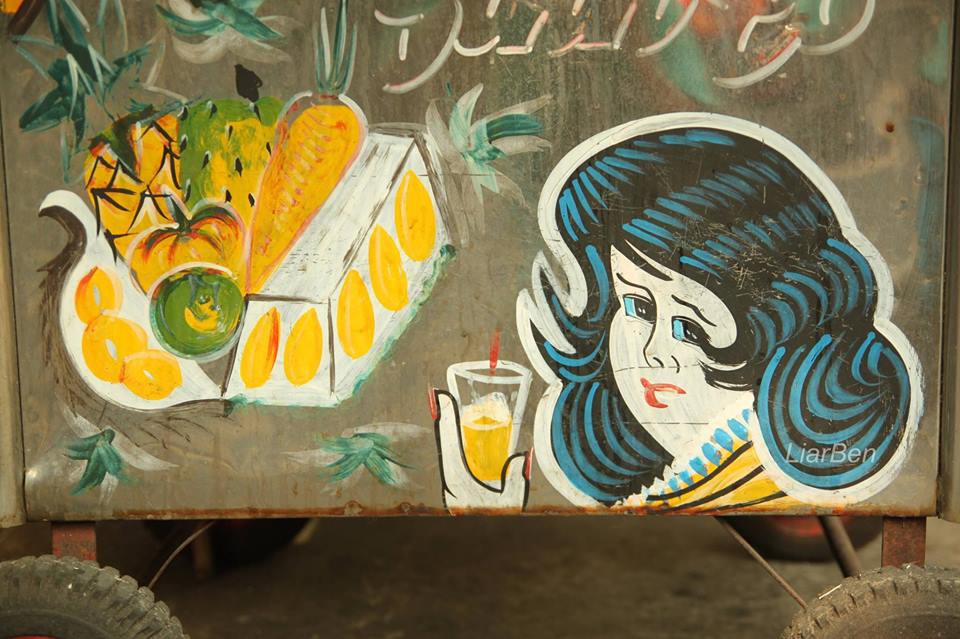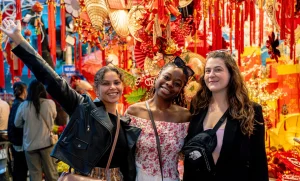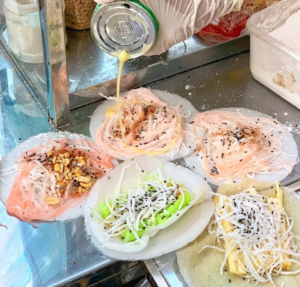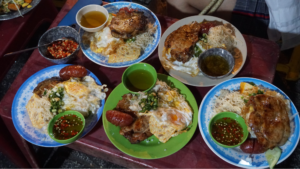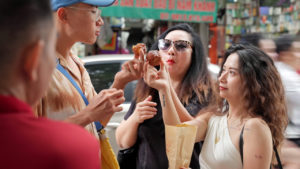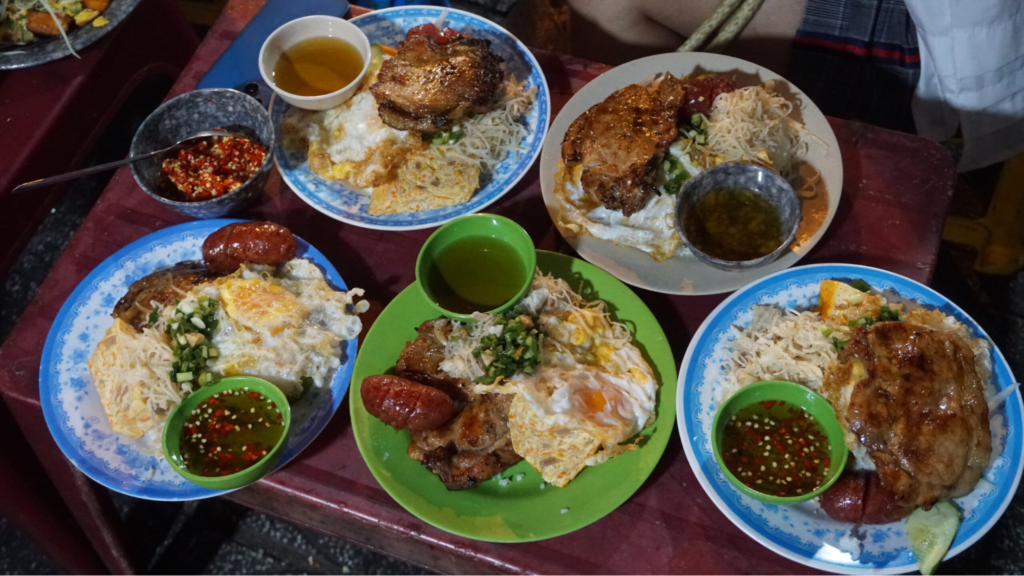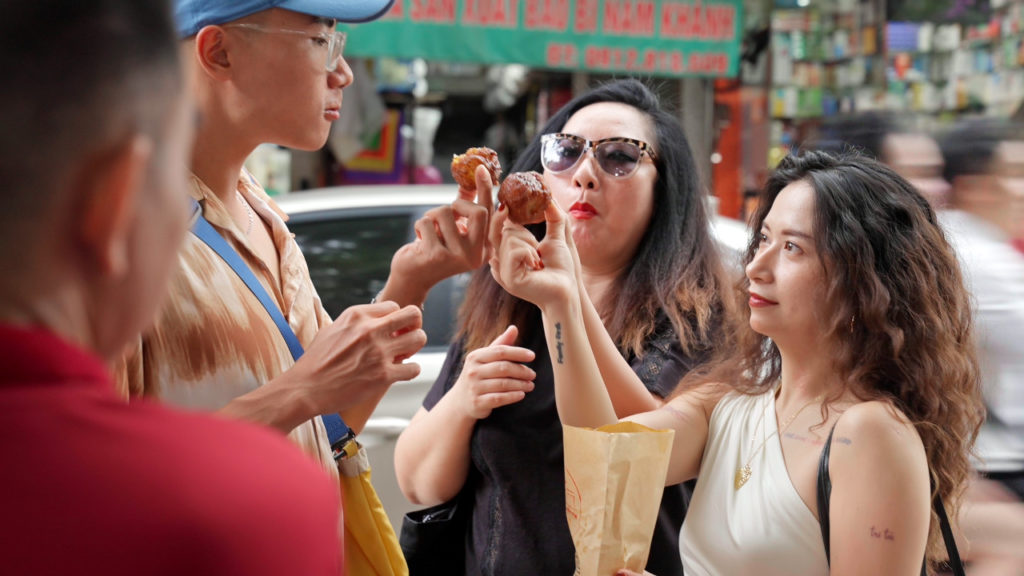1. Cô Mía: A Sweet Icon for Vietnamese Millennials
Little is known about cô Mía—an iconic yet mysterious figure who has become a familiar “ambassador” at nearly every sugarcane juice cart in Saigon. No one is certain when or where this muse first appeared, but her presence is a sure sign that you’re about to enjoy authentic, high-quality sugarcane juice. Over time, Miss Sugarcane, or cô Mía, has become a beloved cultural figure. She is easily recognized by her 70s-inspired style, with bold, voluminous curls that exude charm and confidence. Dressed in a vibrant saffron blouse with ruffled accents, cô Mía radiates a unique retro flair. Her timeless appeal continues to captivate audiences across generations, whether featured in street art, advertisements, or nostalgic media.
Sugarcane has been a staple of Vietnamese cuisine for centuries, but the modern juice vendor, as we know it today, is a more recent development. More recently, the familiar figure of cô Mía—now iconic at nearly every sugarcane juice cart—began to appear. Looking at old photos of Saigon, it’s clear that she wasn’t always part of the scene and only became a recognizable symbol in later decades.
In the 1960s, visual branding wasn’t a priority for vendors. Beverage sellers roamed the streets with wooden carts, a far more elegant sight than today’s plain, metallic stands. However, Miss Sugarcane was notably absent from this era. Even the images of Saigon from the 70s and 80s lack any sign of her. It wasn’t until the 1990s that cô Mía made her debut, swiftly becoming the emblematic figure for sugarcane juice vendors throughout the city.
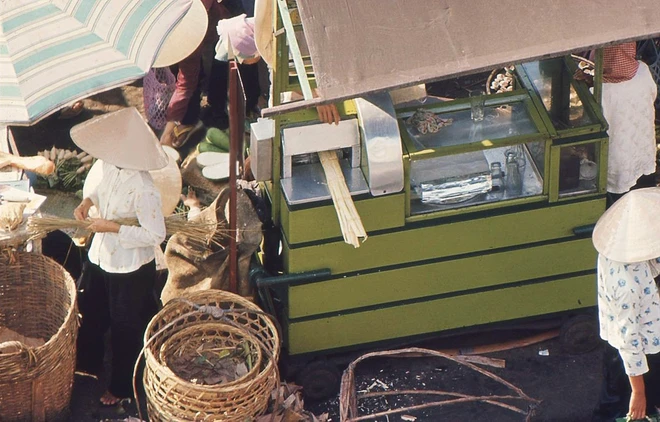
2. Nước Mía’s Other Meaning: A Superstitious Insight
Sugarcane juice has long been a beloved staple in Vietnamese culture, particularly cherished during the sweltering summer months. This refreshing drink is not only delicious but also packed with essential nutrients like calcium and vitamins A, B1, B2, and C, making it a revitalizing choice for those needing an energy boost or combating low blood sugar. However, this delightful beverage comes with a caveat—it’s not for everyone, especially those working in the dynamic realms of the arts or event planning.
In southern Vietnam, an age-old unspoken rule has emerged: avoid sugarcane juice before a significant event. The locals say that if you indulge in this sweet nectar too close to the big moment, you might find yourself facing unexpected hiccups or disruptions. The severity of these misadventures is often humorously said to depend on how much sugarcane juice the organizers have consumed. So while sugarcane juice remains a refreshing icon of summer, it’s wise to savor it at the right time, allowing its sweetness to shine without any pre-event worries.
3. Superstition or Strategy: Why Artists Skip Nước Mía
Many legends and tales surround the intriguing rule of abstaining from sugarcane juice, although the origins remain a delightful mystery. This practice, cherished by generations of artists, has become a whimsical tradition in the performing arts community. It’s often said that those who overlook this custom might find themselves on the less-favored side of Tổ nghề, or The God of Performance!
One of the most popular stories tells of the patron saints of the performing arts, two young princes who were utterly enchanted by music and performances. Their passion was so profound that they forgot to eat and sleep, ultimately exhausting themselves and passing away in each other’s embrace. Both princes had a sweet tooth, particularly for sugarcane and desserts. Legend has it that whenever they caught a whiff of someone sipping sugarcane juice, the enticing aroma would distract them, preventing them from blessing the event!

Another charming tale suggests that the sugarcane plant serves as the magic sword of the patron saint, and consuming sugarcane or drinking sugarcane juice is akin to taking away his cherished sword. Beyond avoiding sugarcane juice, artists and event planners in this vibrant community also refrain from giving money to beggars, offering quince to the patron, or indulging in sweets. These delightful customs contribute to the unique tapestry of artistic traditions.
Interestingly, these endearing taboos are mostly observed in southern Vietnam, especially in Ho Chi Minh City, a bustling hub for musical events. The reasons behind this cultural quirk remain a charming enigma. This delightful rule is known only among southern artists, passed down like a treasured family secret, adding a touch of magic to the world of performances.
4. Alternatives to Nước Mía: What Do Entertainers Drink Instead?
While the sweet, refreshing allure of nước mía – sugarcane juice holds a special place in the hearts of many, entertainers in Vietnam often turn to a delightful array of alternatives to keep them energized and ready for the spotlight.
Nước chanh (lemonade) offers a zesty and invigorating balance of sweetness and tartness, perfect for quenching thirst while lifting spirits. Meanwhile, sinh tố (smoothies), bursting with tropical flavors like mango, papaya, and banana, provide a creamy indulgence that fuels creativity and passion. Another favorite is nước dừa (coconut water), which serves as nature’s rehydration drink, offering a light, nutty flavor that refreshes without pre-event superstitions.
Together, these delightful beverages not only keep entertainers refreshed but also celebrate the rich diversity of flavors found in Vietnamese drinks, adding a touch of joy to their performances!
As there are uncountable colorful Vietnamese beverages out there, cô Mía continues to reign supreme as the beloved symbol of sugarcane juice. Her presence is more than just a nostalgic reminder of refreshing sips; it carries a playful superstition that adds to her charm, making entertainers or artists believe that this sweet elixir might stir up mischief and mayhem.
